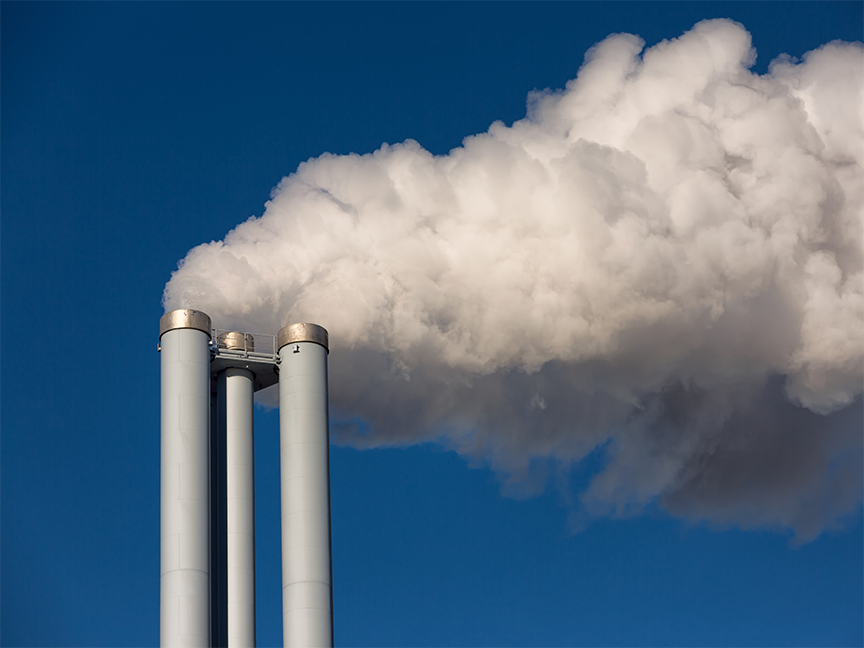
Companies seeking to decarbonize their supply chains will never reach that goal without the help of suppliers over which they assert no direct control.
Under the Greenhouse Gas Protocol, Scope 3 emissions are defined as those originating from activities that are neither owned nor controlled by the reporting organization, but nonetheless have an impact on its supply chain. (Scope 1 consists of direct greenhouse gas (GHG) emissions by that entity, while Scope 2 covers indirect emissions generated by the purchase of energy.) Scope 3 emissions account for anywhere from 65% to 95% of a company’s total carbon footprint. They comprise 15 categories of activities in all, including transportation and distribution, purchased goods and services, waste disposal and business travel.
The complex nature of multi-tier supply chains makes it especially difficult to monitor Scope 3 emissions. “Companies are really struggling to achieve visibility into what their Scope 3 emissions are,” says Shane Rooney, principal consultant with Proxima. “They don’t have the capacity to benchmark their carbon footprint.”
The second major challenge is figuring out what to do with the relevant information once it’s in hand — how to convert it into usable carbon data. The GHG Protocol offers some guidance, as does the Science-Based Targets initiative (SBTi), a collaboration between the Carbon Disclosure Project, UN Global Compact, World Resources Institute and World Wide Fund for Nature. It helps companies to align their spend with carbon metrics.
Still, says Rooney, there’s currently no “perfect” system for bringing together all of the data generated by supply chain partners into a single number that represents a company’s total carbon footprint. While new technologies promise to improve the collection, assessment and tracking of cargo data, “it’s still a relatively immature area.”
The pressure is on to make rapid progress on Scope 3 emissions visibility. Businesses are feeling it from investors and consumers alike. The ability to measure and monitor one’s carbon footprint “has become a differentiator,” says Rooney, “and expectations are only increasing for it to be embedded into everything a company does in the next five to 10 years. It’s going to be an intense and fast-moving path.”
The current sense of urgency is partly fueled by a temporary decline in public awareness of climate-change issues during the COVID-19 pandemic. Some companies, battered by soaring costs, factory shutdowns and supply chain congestion, set aside sustainability targets during the past two years and shifted instead into survival mode. At best, says Rooney, “they set a vague target and it just sat there."
The growing number of regulations and concerns by supply chain stakeholders are sparking renewed interest in sustainable operations, Rooney believes. That’s especially the case among global food distributors, who are under increasing pressure to disclose the source of their products all the way back to the farm. Recent disruptions of supply “have shocked organizations to reassess and make more resilient and agile supply chains,” he says. With such moves comes the level of visibility that has become essential to calculating carbon emissions by all supply chain partners.
Important as they are, carbon emissions are just one aspect of the overarching environmental, sustainability and governance (ESG) mandate that’s taking center stage for global organizations today. To keep pace with increasingly strict requirements, companies must embed them into every sourcing decision they make, Rooney says. It starts with an ESG champion in the C-suite, but then must filter down to all levels of management, especially within the sourcing and procurement function. In some cases that might entail the appointment of a chief sustainability officer to oversee corporate-wide ESG efforts. But it’s equally important to spread the responsibility throughout the organization, Rooney says.
In the coming years, decarbonization and sustainability — including the ability to measure the carbon output of all supply chain partners — will form the foundation of profitable companies. “This is definitely a long-term game right now,” Rooney says, “but geopolitical and climate risks are only going to increase, and it’s beneficial in the long run. “Investors are finally coming around to see that.”







